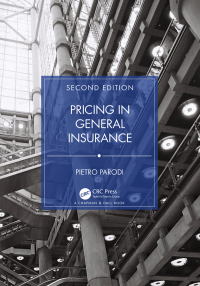(For some readers, this problem might be better tackled after reading Chapter 22.) Petrochemical company X insures...
Question:
(For some readers, this problem might be better tackled after reading Chapter 22.)
Petrochemical company X insures its single oil refinery with insurer Y and its property damage insurance has just been renewed and will incept 1 May 2023 (2023 policy year). Traditionally Y’s pricing guidelines prescribed from-the-ground-up premium rate of 0.1% of the total insured value, but a recent recalibration with a richer data set has found that a rate of 0.12% better reflects the risk (which itself hasn’t changed over recent years).
Assuming that
• the full value of the refinery is insured for both 2022 and 2023;
• the insured value has been revised from $800M (2022) to $850M (2023);
• the actual premium (AP) charged was $900k in 2022 and has been renewed for
$1.05M;
i. Calculate the rate change between the 2022 and the 2023 policy years (both incepting 1 May), explaining your strategy to deal with the change to the recommended premium rate.
ii. Calculate the premium walk from AP(2022) to AP(2023) breaking down the contribution (where applicable) of exposure change, policy structure change, and rate change.
iii. Explain how your answer to parts (i) and (ii) would change if the increase in the premium rate from 0.1% to 0.12% were due to the deployment of new, less consolidated technology in policy year 2023 (ignore exact timing) which is expected to increase the overall frequency of losses by 20% and revise your calculations accordingly.
Your risk management department undertakes a pricing review for the property business, and notes that using premium rates rather than expected loss rates could fail to differentiate clients with less volatility (e.g. chains of supermarkets) from clients with more volatility (e.g. single refineries like in this case), for which a higher loss ratio should be required.
iv. Explain how you could modify the pricing methodology in order to take that into account, giving an example of a formula that you could use to calculate the technical premium for a generic client with k different locations with insured values IV I 1 2 V IVk
Step by Step Answer:






